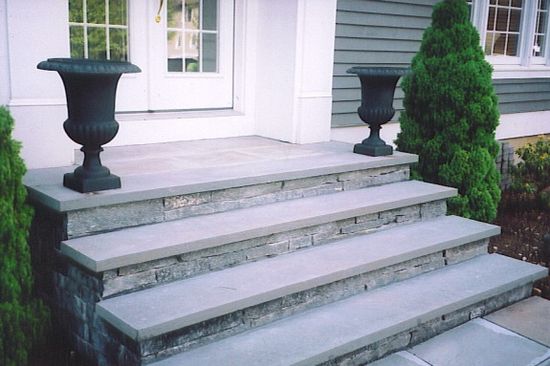When it comes to choosing the right material for exterior steps, homeowners in Montgomery, Alabama, often find themselves deciding between concrete and wood. Both materials offer unique benefits, but the best choice depends on your priorities, such as durability, aesthetics, and maintenance. In this blog, we’ll compare concrete steps and wood steps to help you determine which material is the better option for your home.
1. Durability and Longevity
Concrete Steps:
Concrete is known for its strength and durability. Concrete steps can withstand the elements, including rain, heat, and heavy foot traffic, without deteriorating. They can last for decades with minimal maintenance, making them a long-term solution for exterior stairs in Montgomery’s varying climate.

Wood Steps:
Wood steps, while aesthetically appealing, are not as durable as concrete. They are susceptible to weather-related damage, including rot, warping, and insect infestations. While treated wood can last for many years, it generally requires more frequent maintenance and replacement compared to concrete.

2. Maintenance
Concrete Steps:
Concrete steps require minimal maintenance. Once installed, they only need occasional cleaning and sealing to protect against moisture and stains. Unlike wood, concrete doesn’t need to be painted or treated regularly to maintain its structural integrity.
Wood Steps:
Wood steps require significantly more maintenance than concrete. They need to be painted, stained, or sealed regularly to prevent damage from moisture, pests, and sun exposure. If not properly maintained, wood steps can rot, warp, or develop mold, leading to more frequent repairs or replacements.
3. Aesthetic Appeal
Concrete Steps:
You need to paint, stain, or seal them regularly to prevent damage from moisture, pests, and sun exposure. Stamped, stained, or colored concrete can mimic the appearance of natural stone or wood, allowing for a range of design options. Concrete steps provide versatility in design while maintaining a clean, durable surface.

Wood Steps:
Wood steps have a natural, warm aesthetic that appeals to many homeowners. The beauty of wood can complement a range of architectural styles, especially traditional or rustic homes. However, over time, wood steps may lose their appeal if they are not well-maintained.

4. Cost
Concrete Steps:
The initial cost of installing concrete steps may be higher than wood, but the long-term savings on maintenance and repairs make concrete a cost-effective option in the long run. Since concrete steps have a longer lifespan, they require fewer replacements, adding to their value over time.
Wood Steps:
Wood steps typically have a lower upfront cost than concrete, making them an attractive option for homeowners on a budget. However, the ongoing maintenance and potential need for replacements can add to the total cost over time. For homeowners who prefer wood, the long-term expenses should be considered.
5. Safety
Concrete Steps:
Concrete steps provide a solid, non-slip surface when properly finished with a textured surface, such as a broom finish. This reduces the risk of slips and falls, especially during rainy or humid weather, making concrete a safer option for outdoor steps.

Wood Steps:
Wood steps can become slippery when wet, increasing the risk of accidents. While you can add anti-slip coatings or treads to improve traction, wood is generally less slip-resistant than concrete.

Conclusion
When choosing between concrete and wood steps for your Montgomery home, consider your priorities in terms of durability, maintenance, cost, and aesthetics. Concrete steps offer long-lasting durability and low maintenance, making them a practical choice for homeowners who want a low-maintenance, long-term solution. Wood steps, while visually appealing, may require more upkeep and have a shorter lifespan.
If you’re ready to install new steps, reach out to a local contractor to discuss your options and determine the best material for your home’s exterior.

